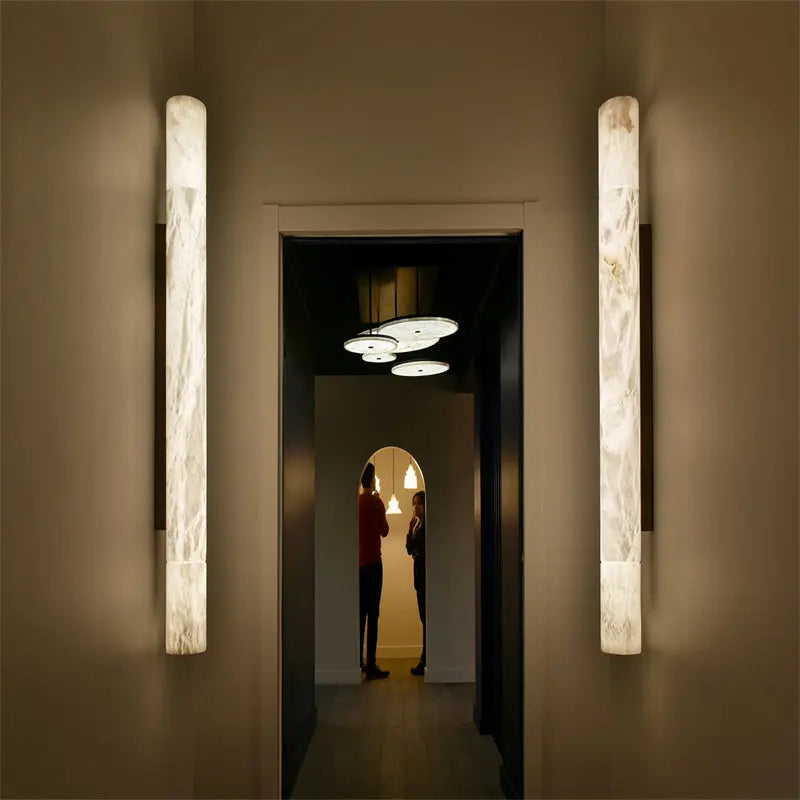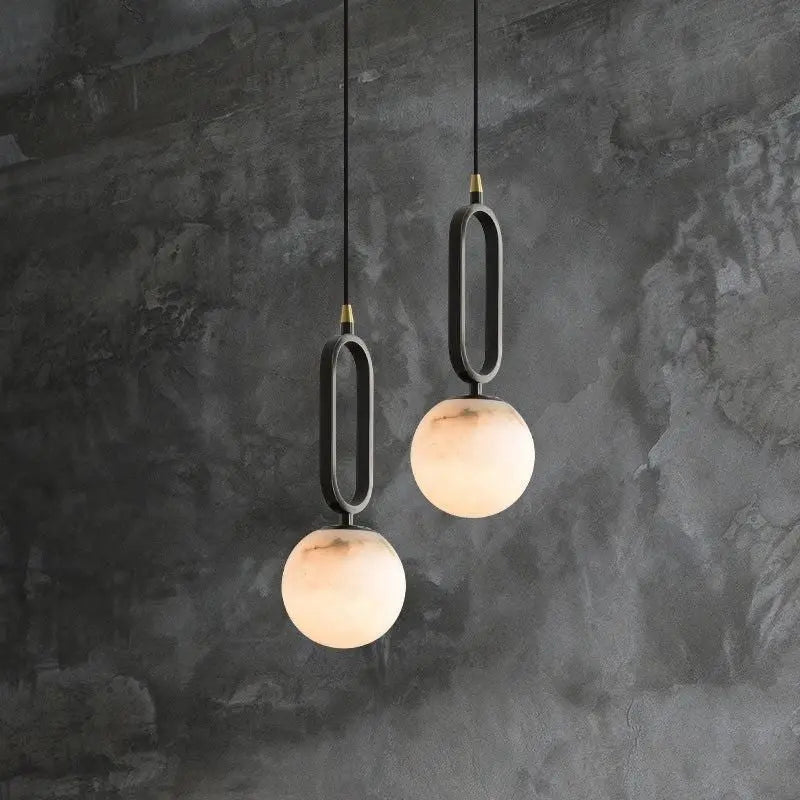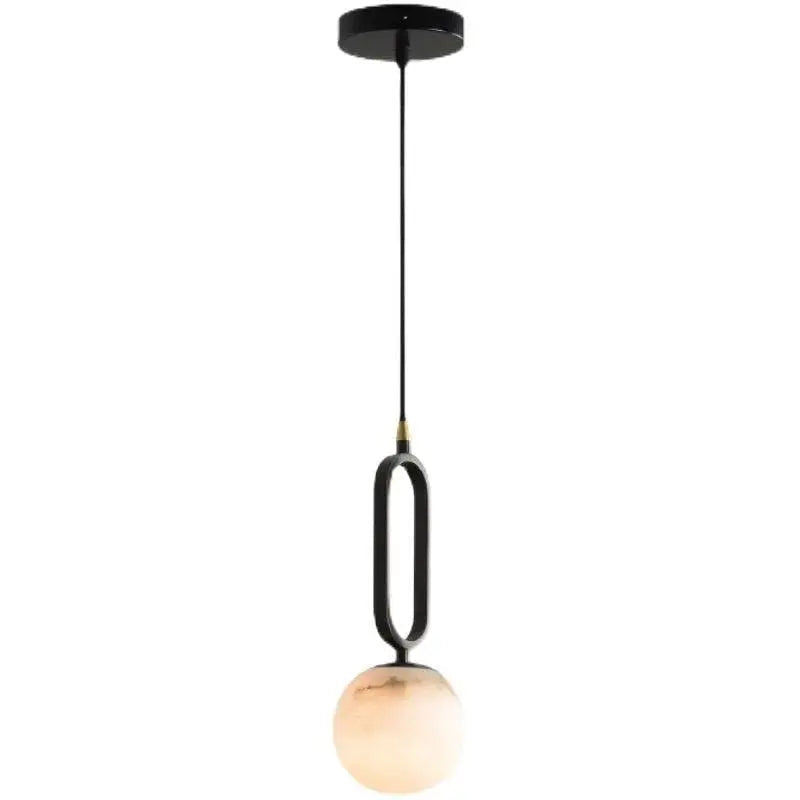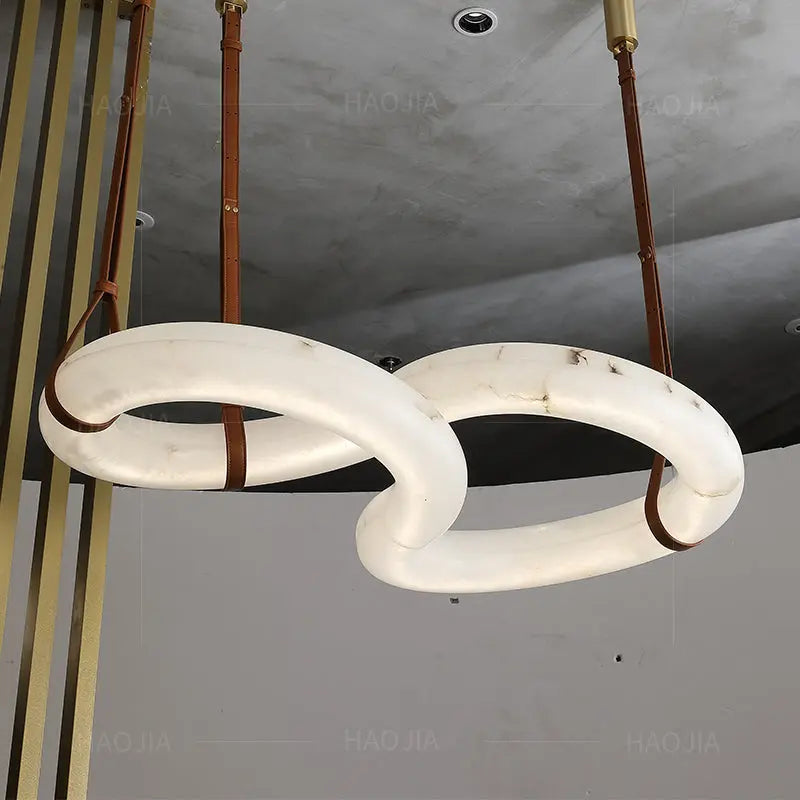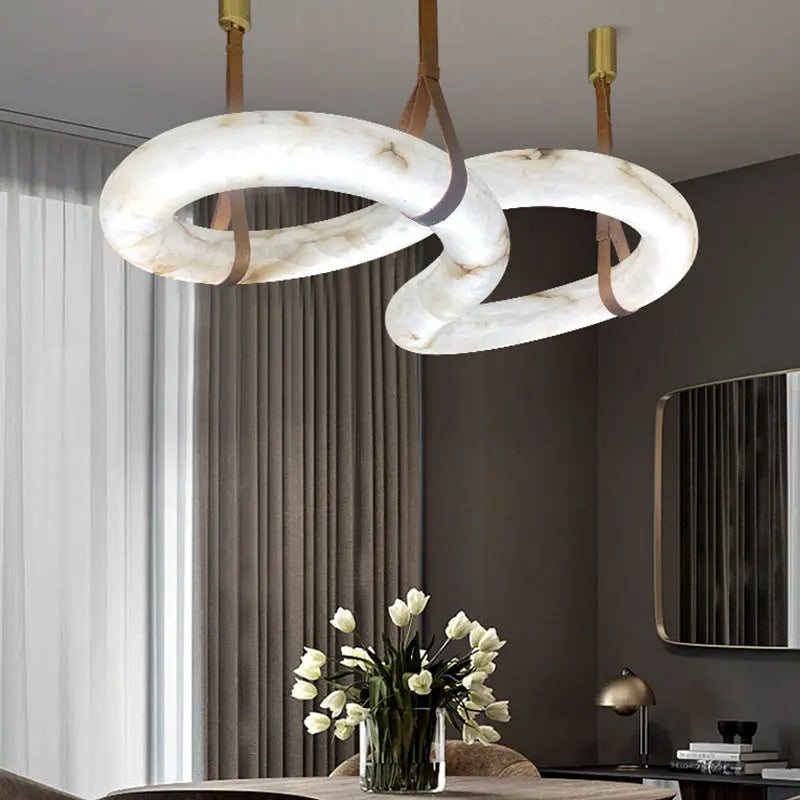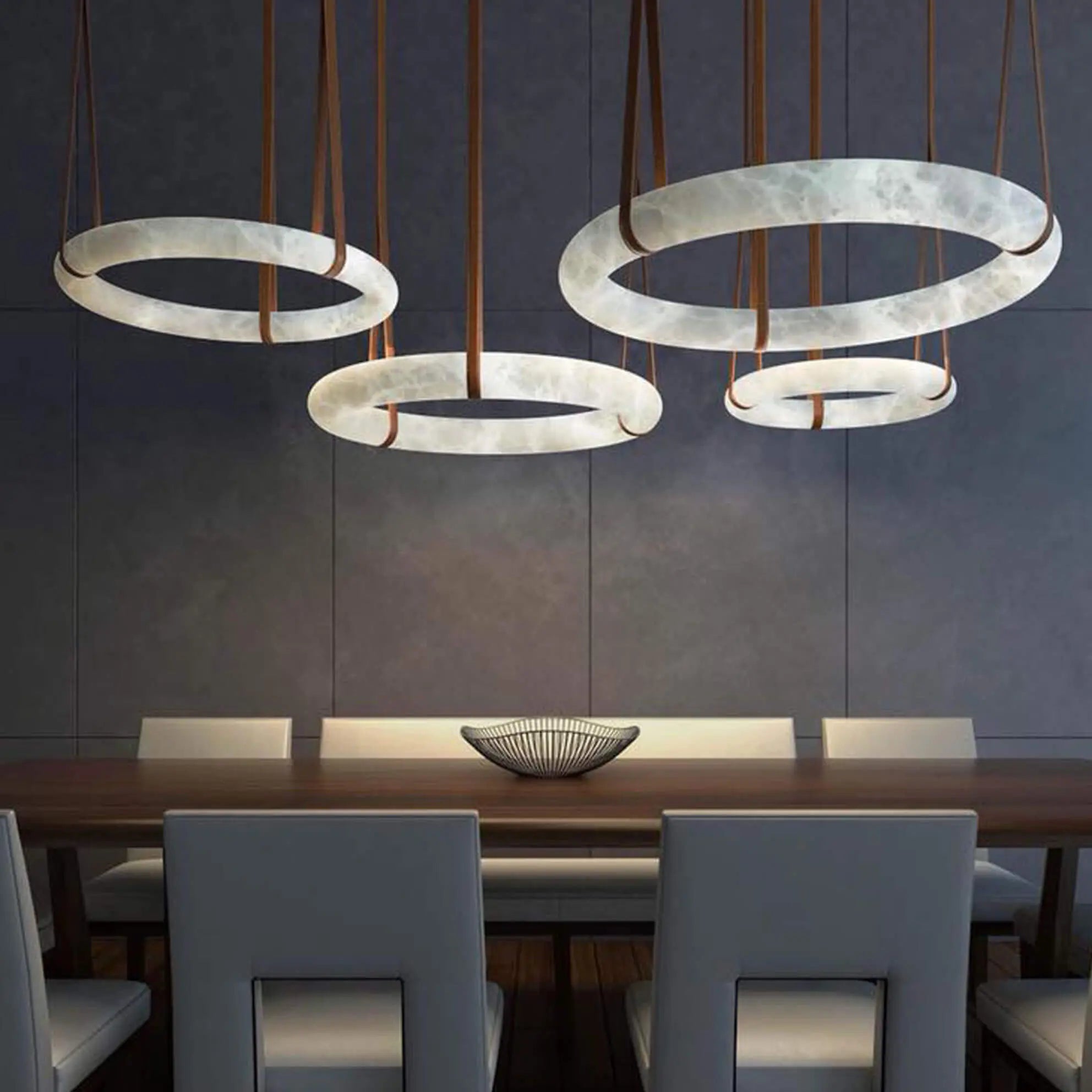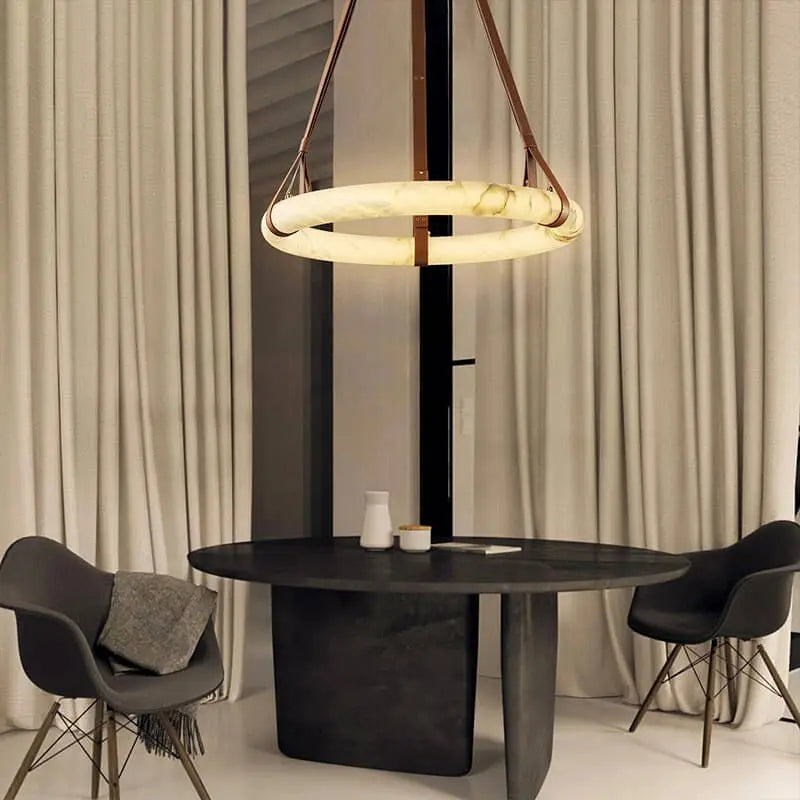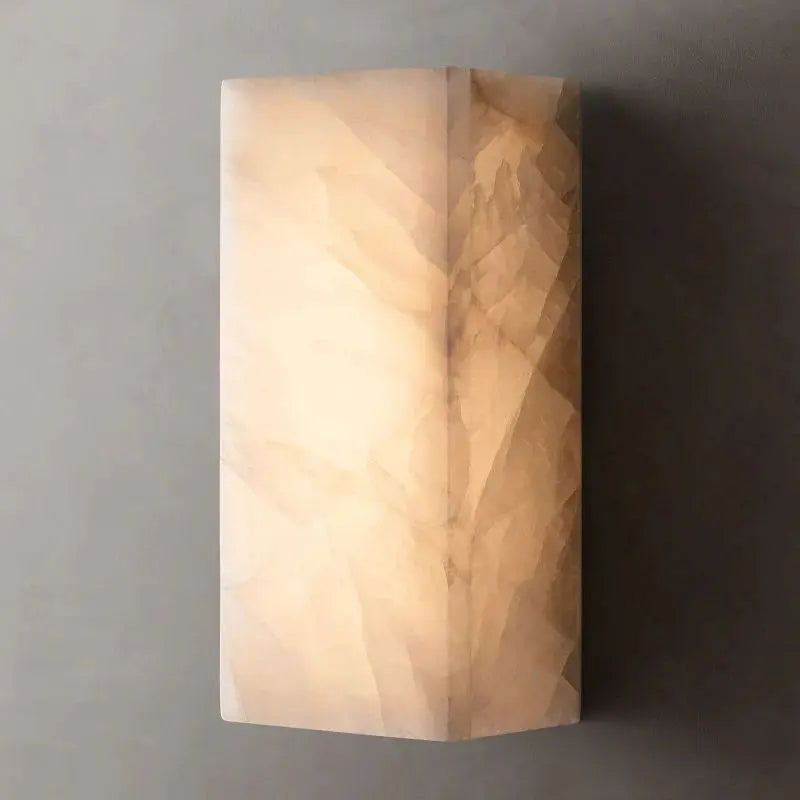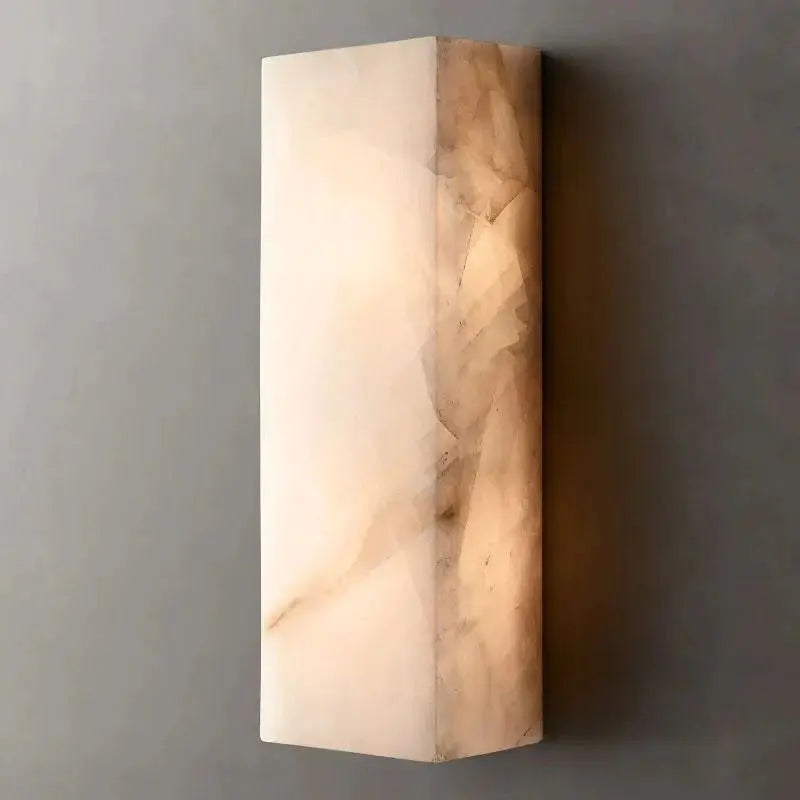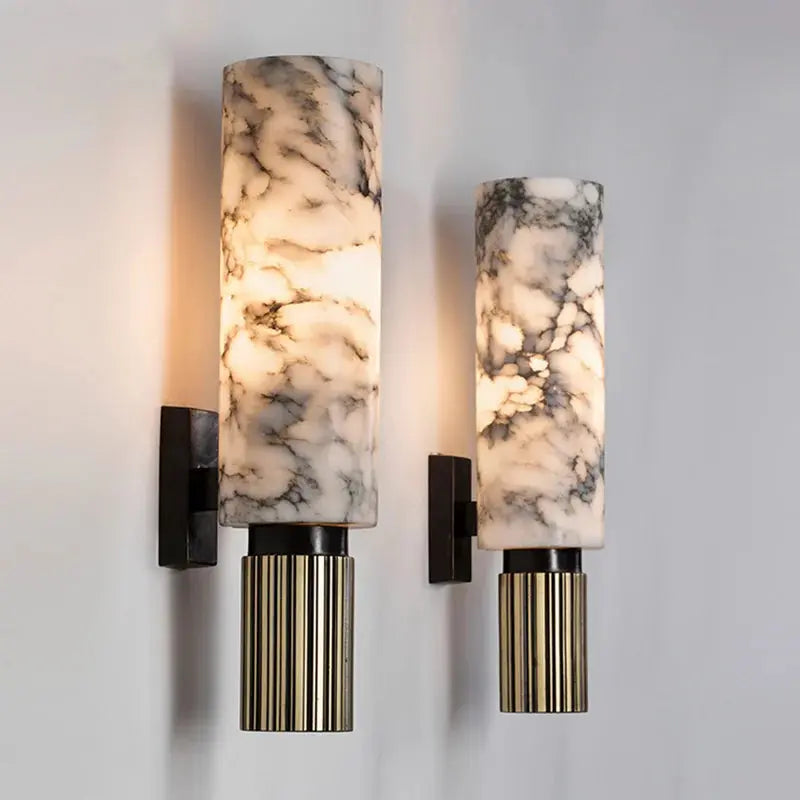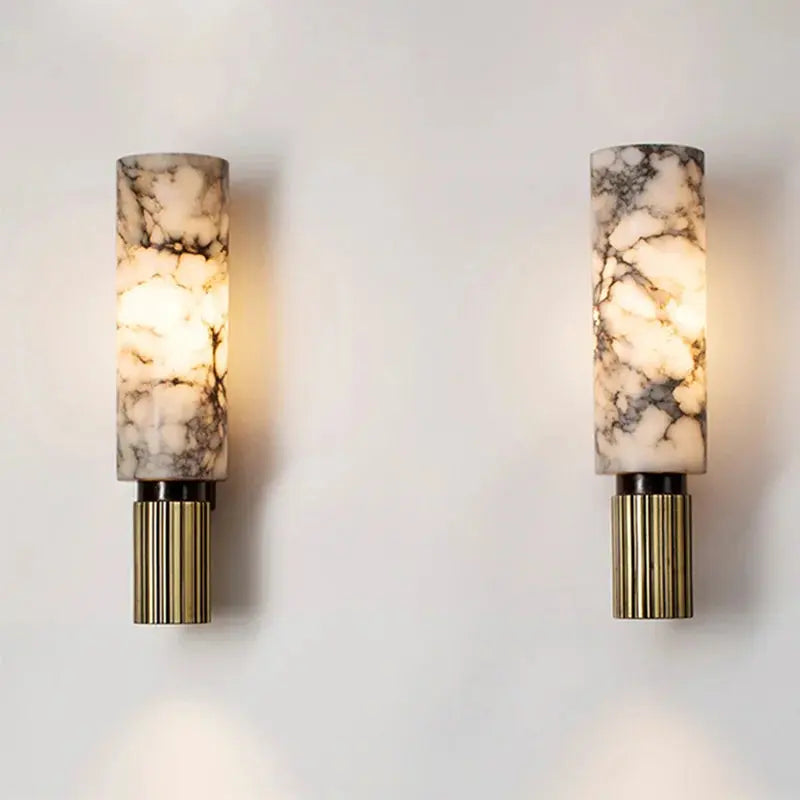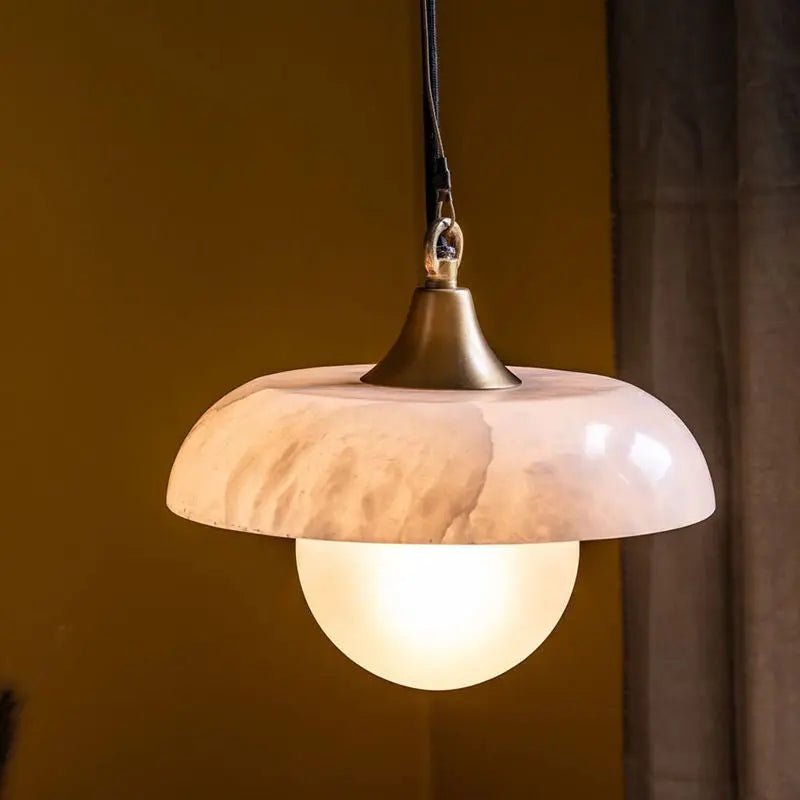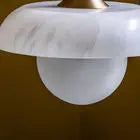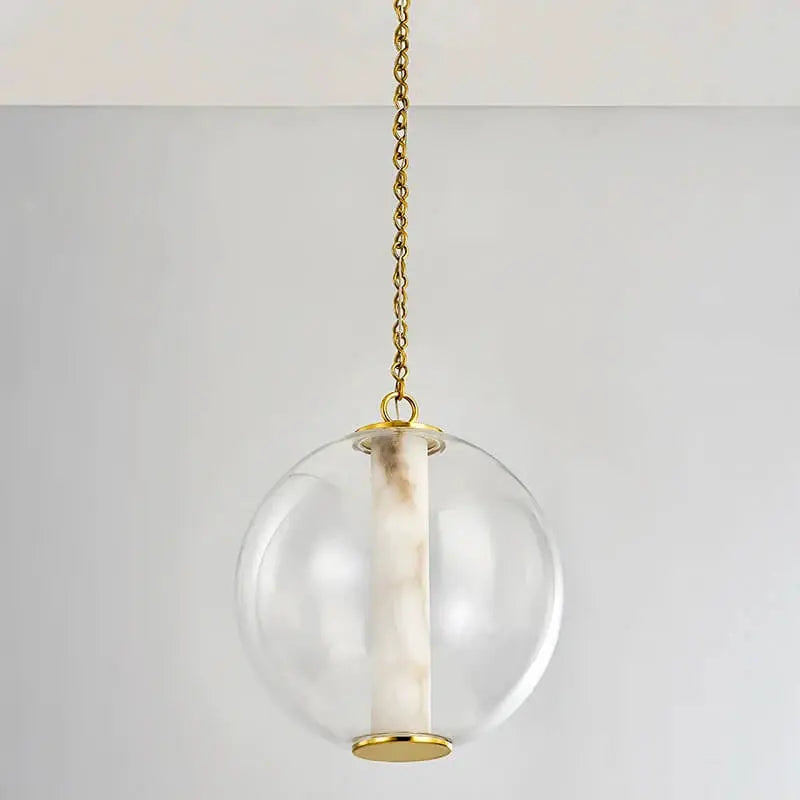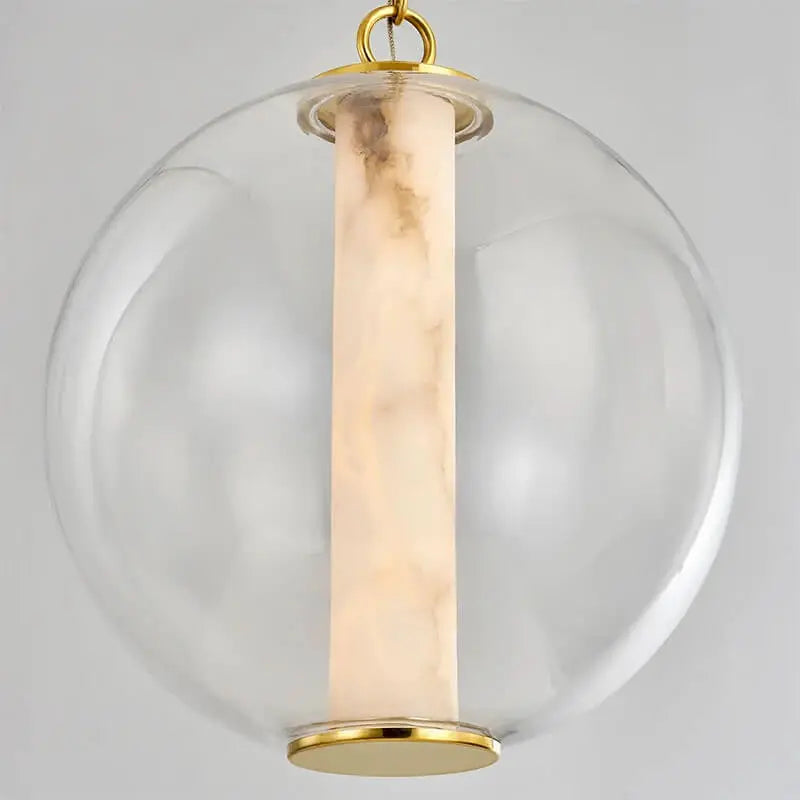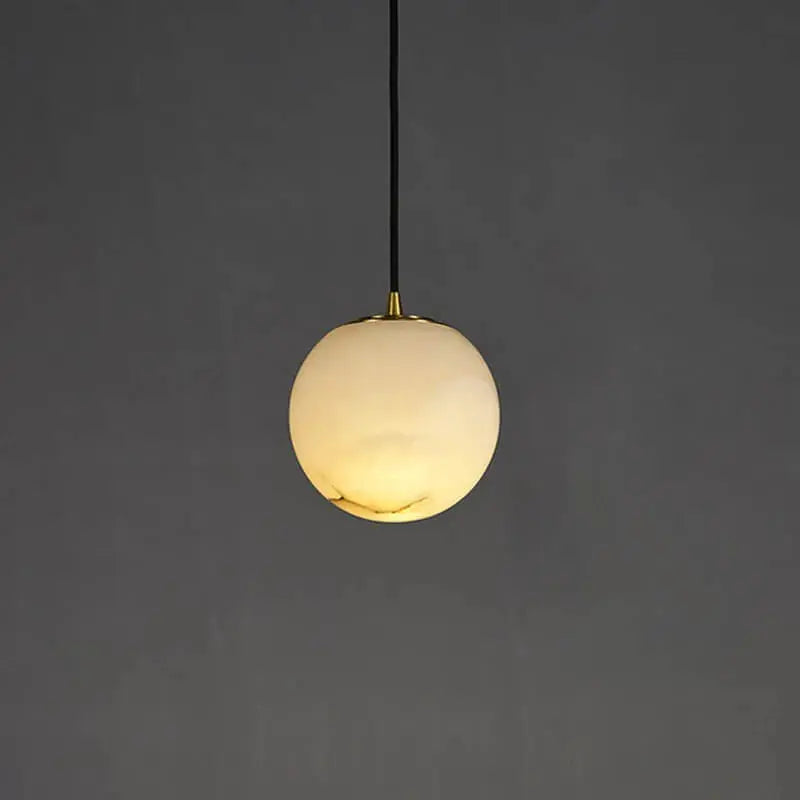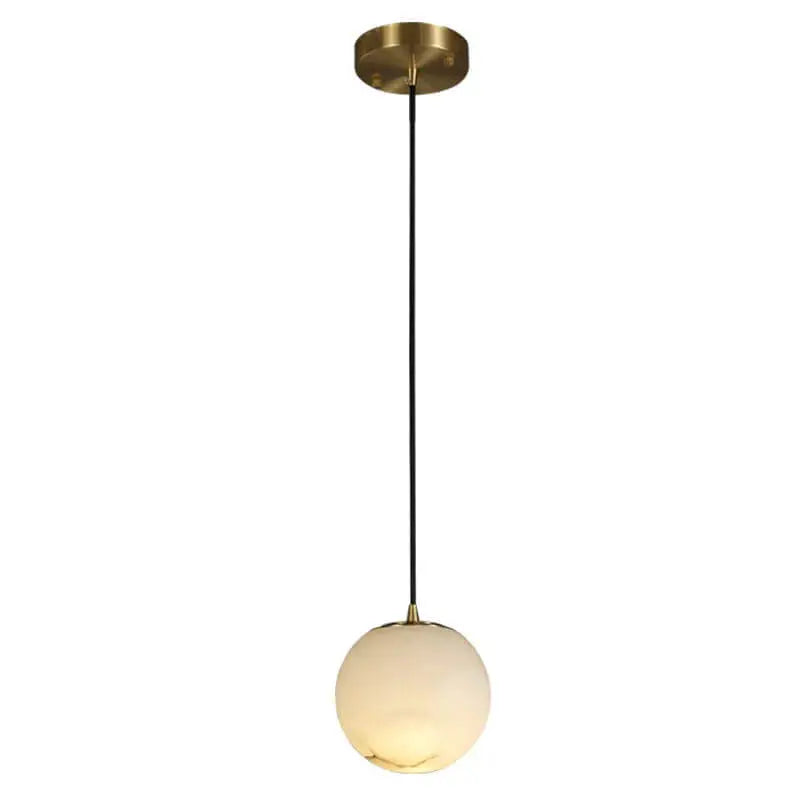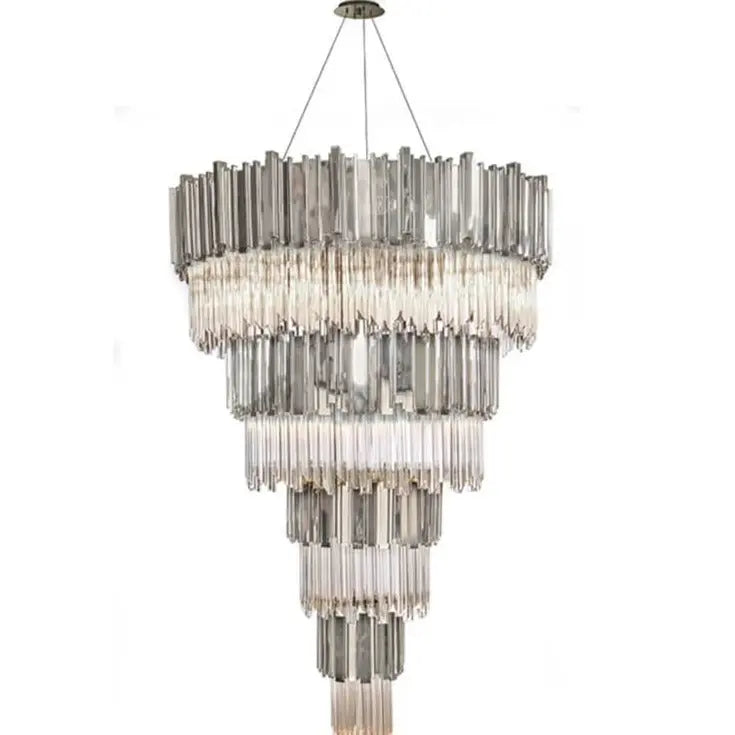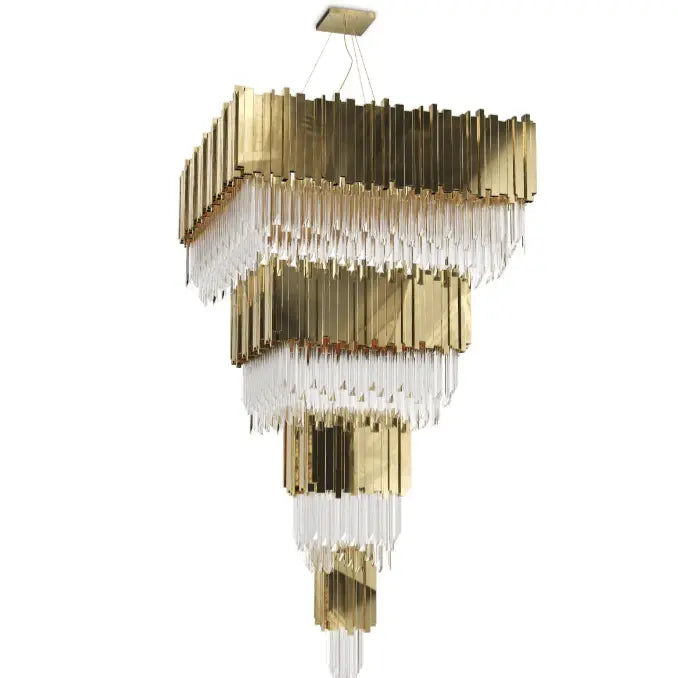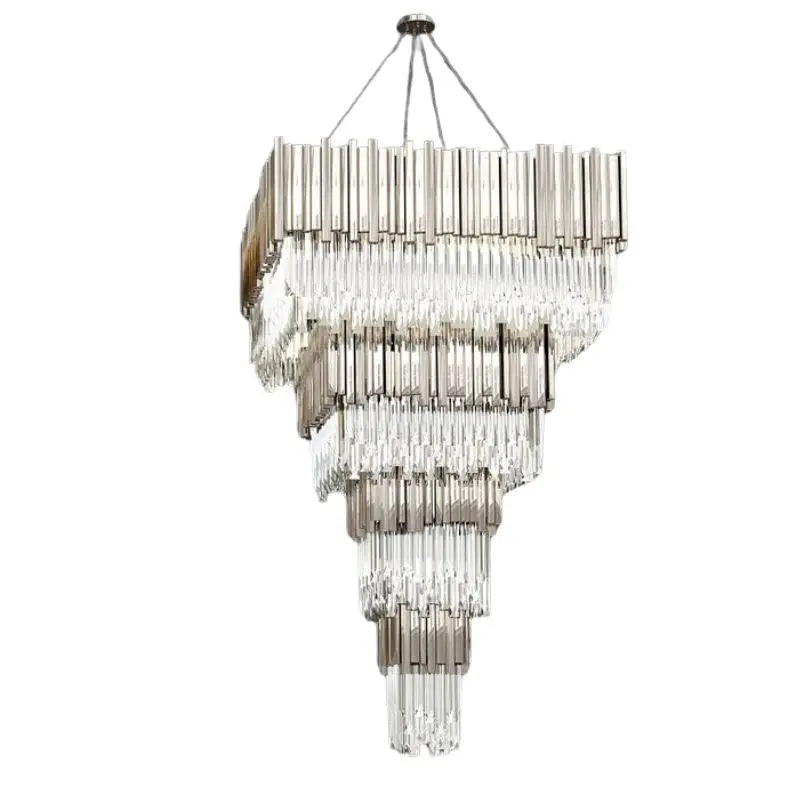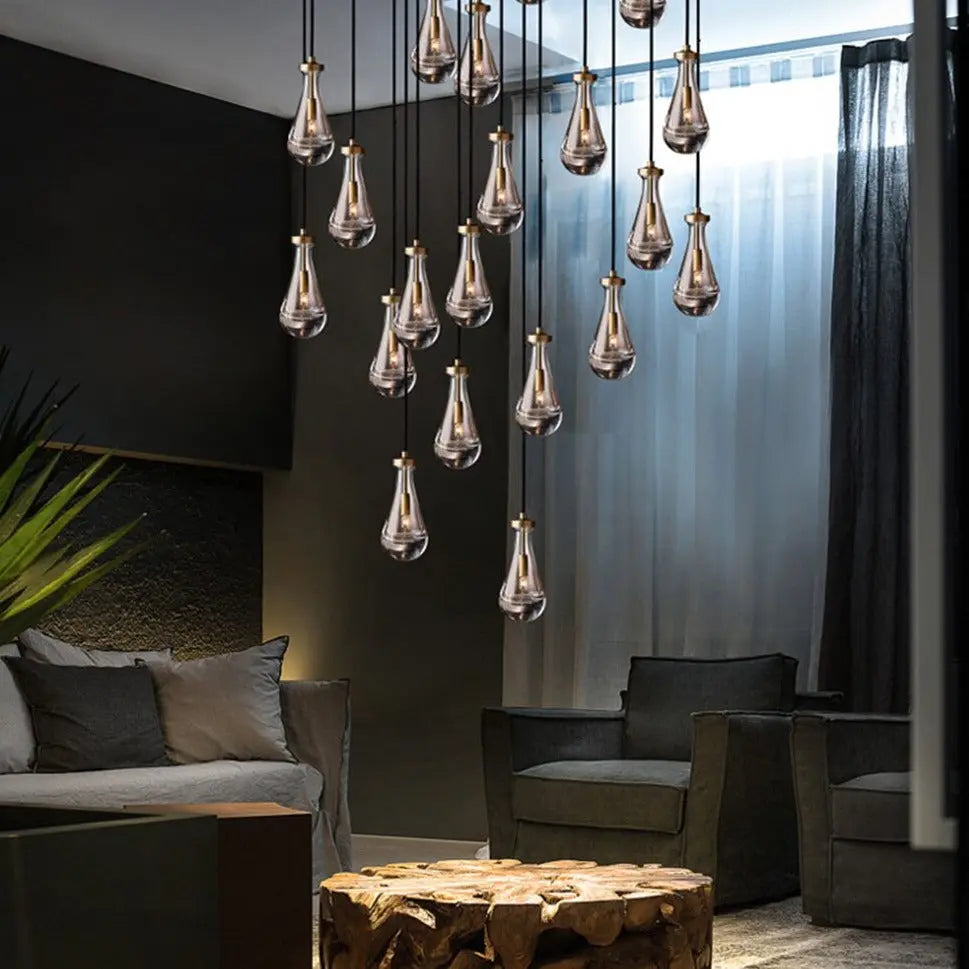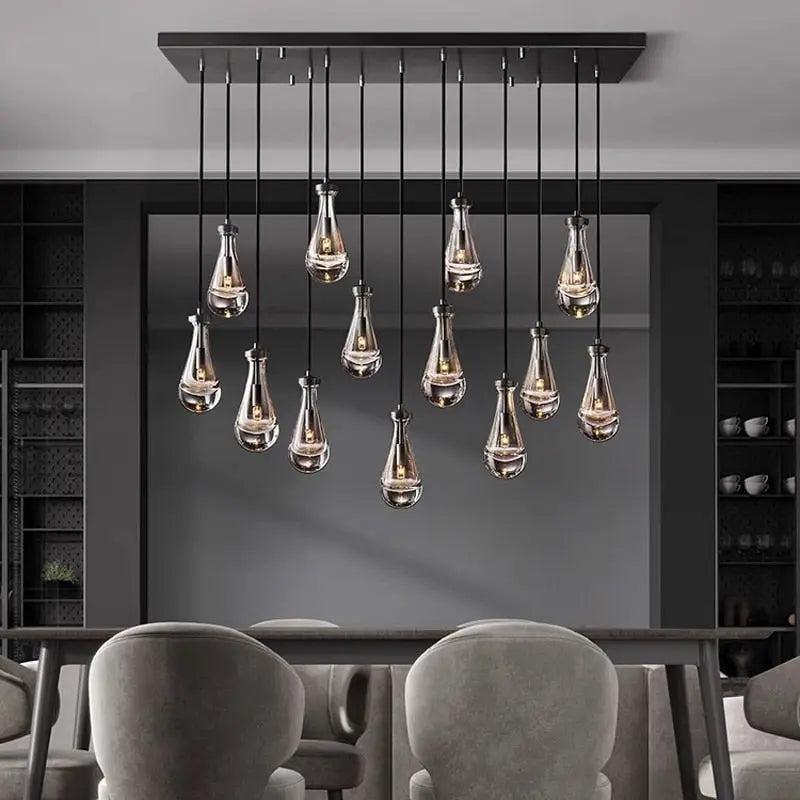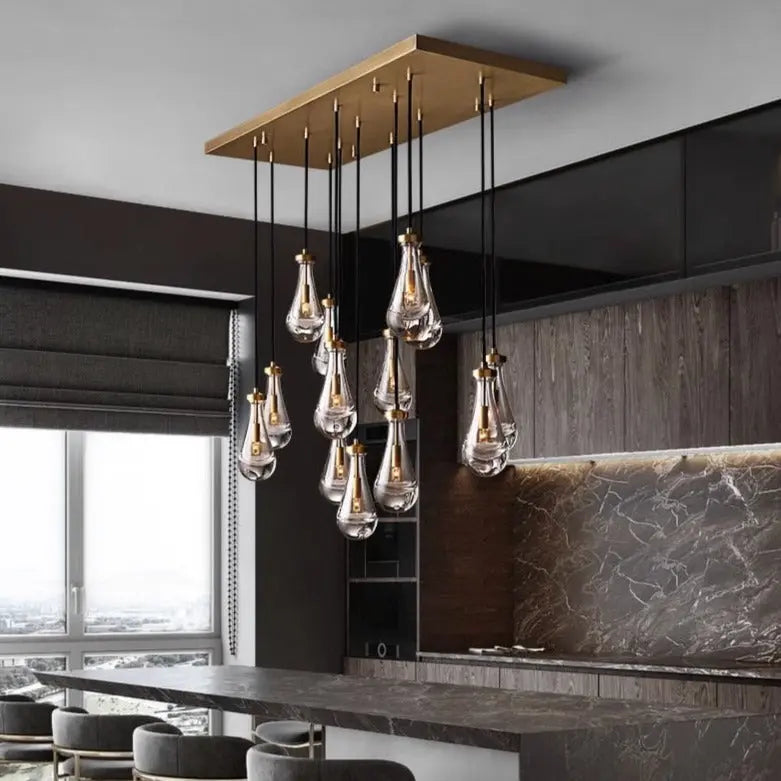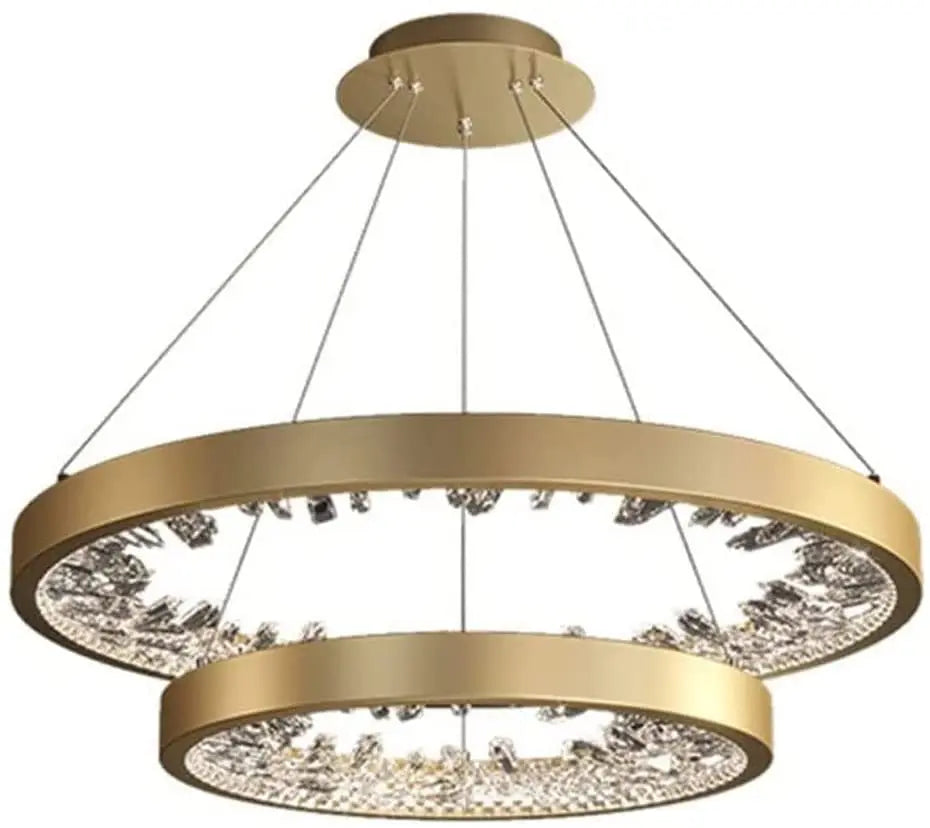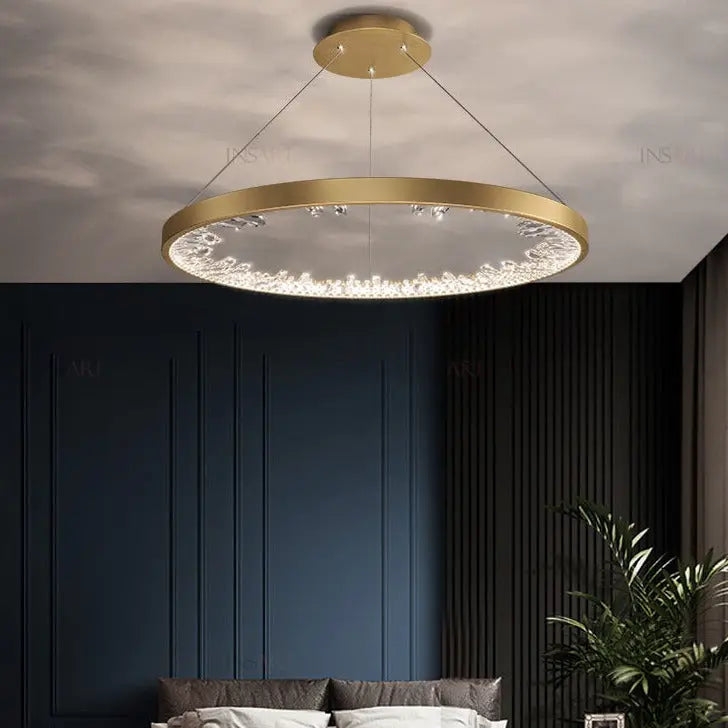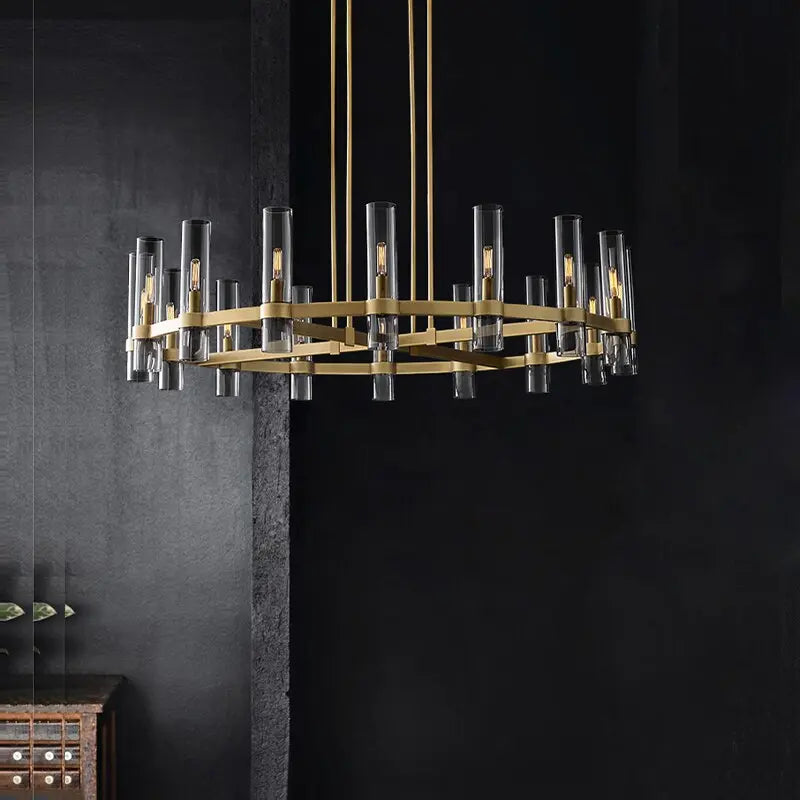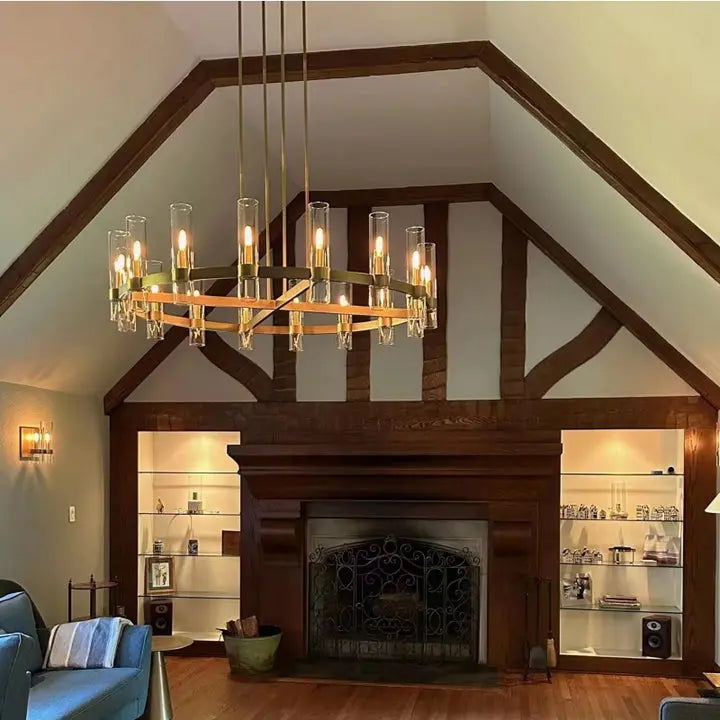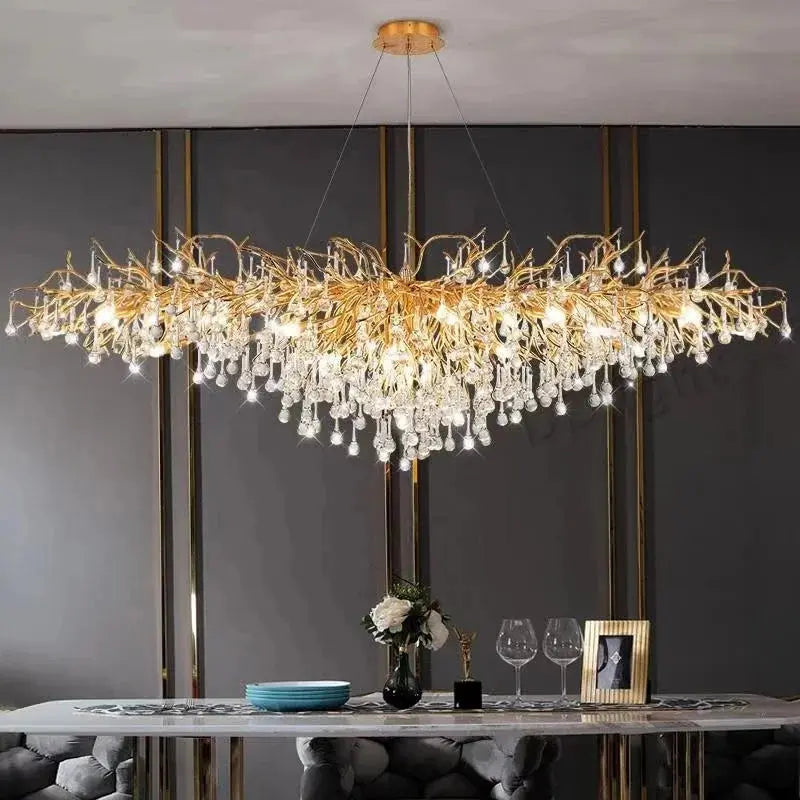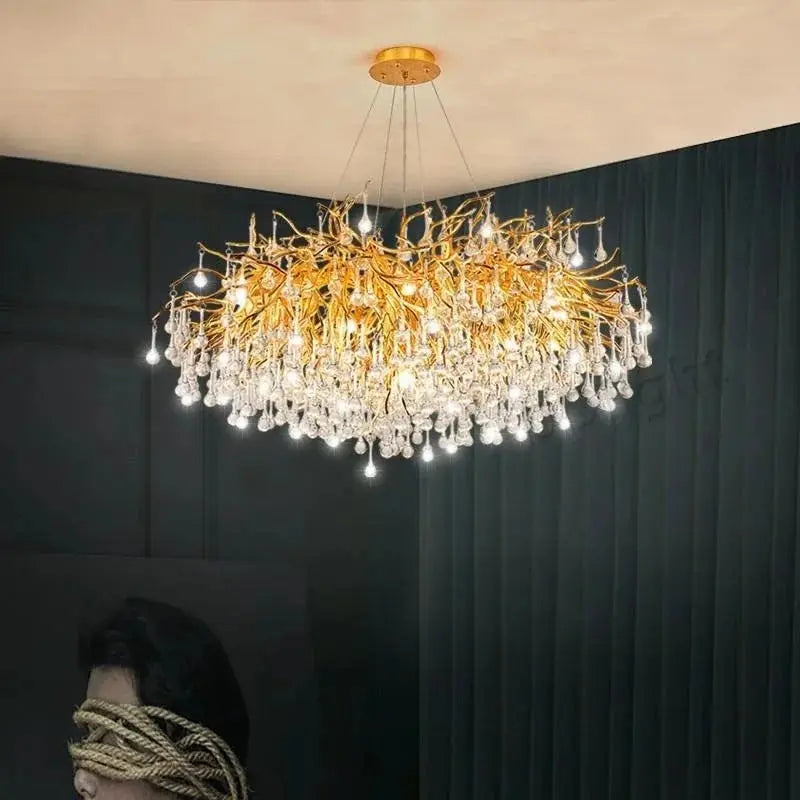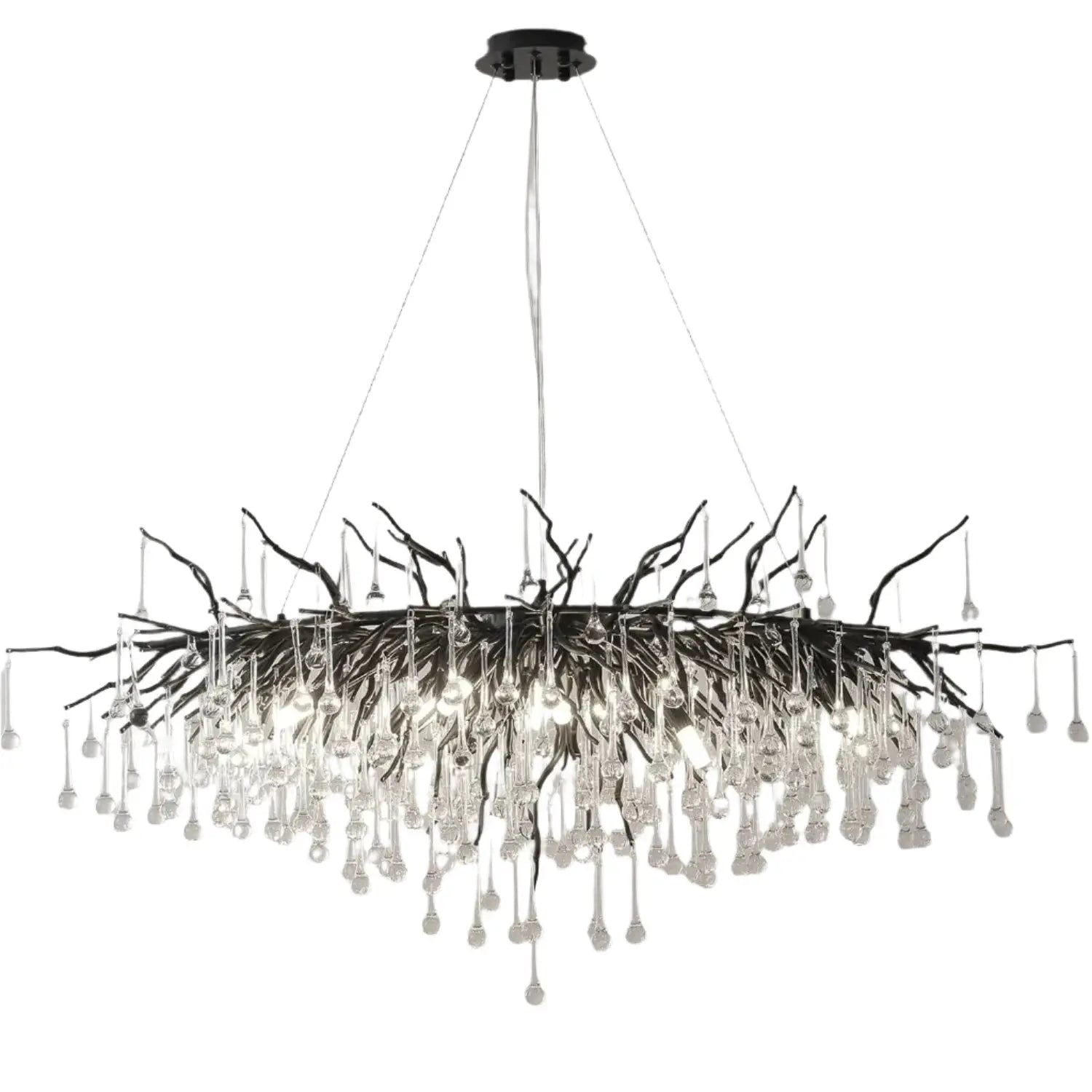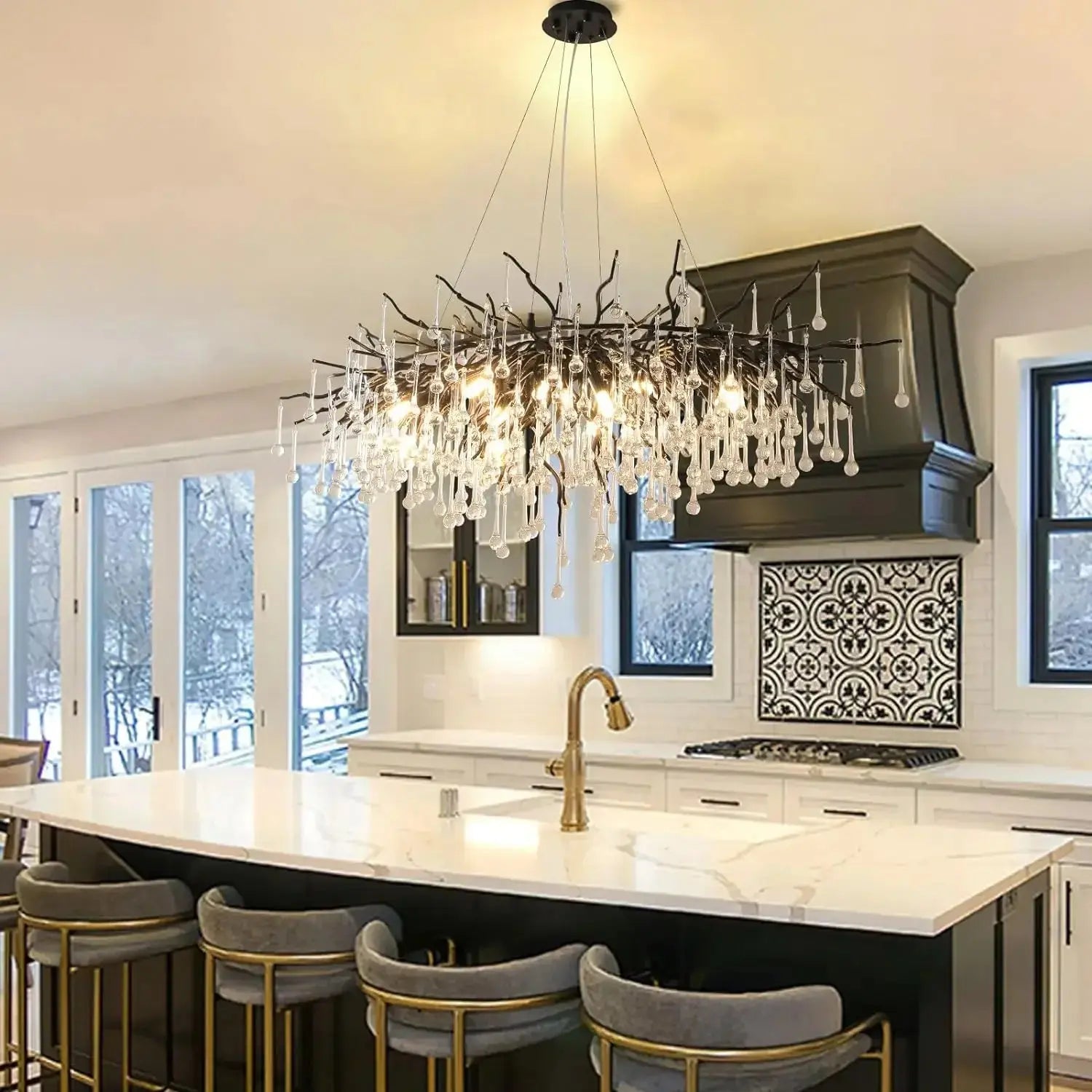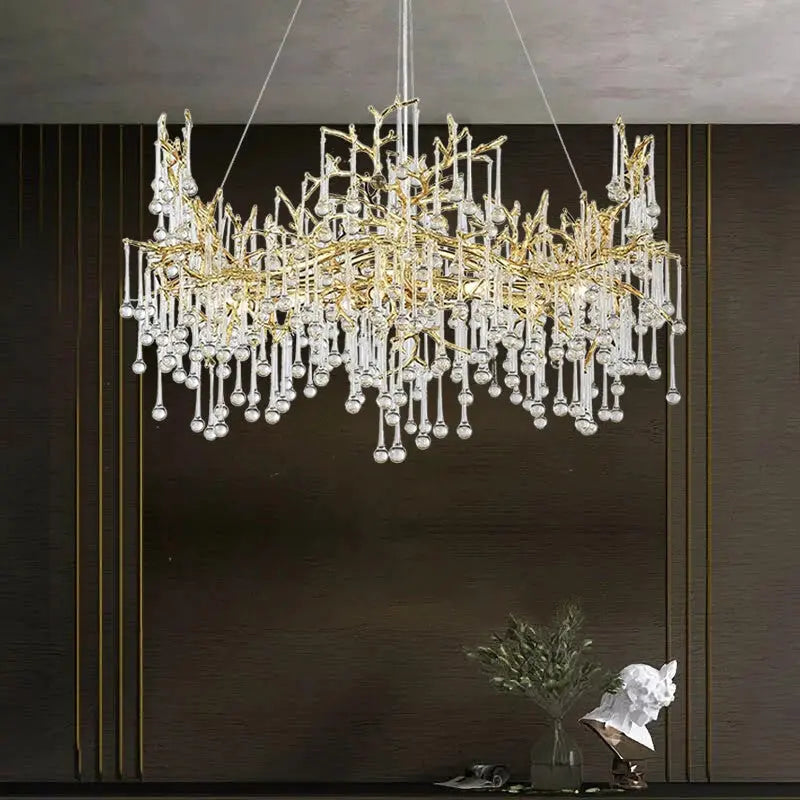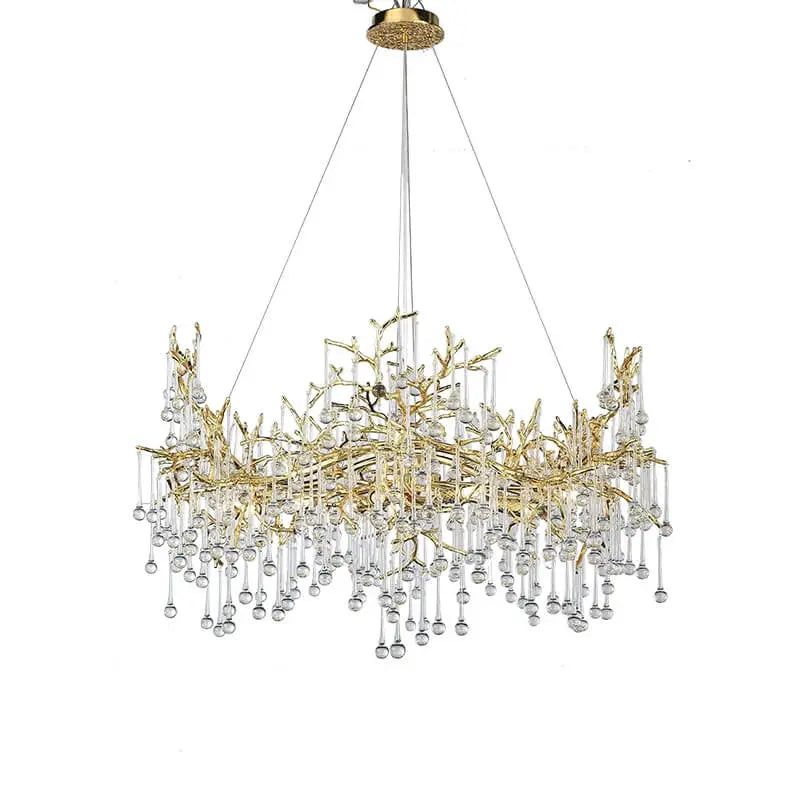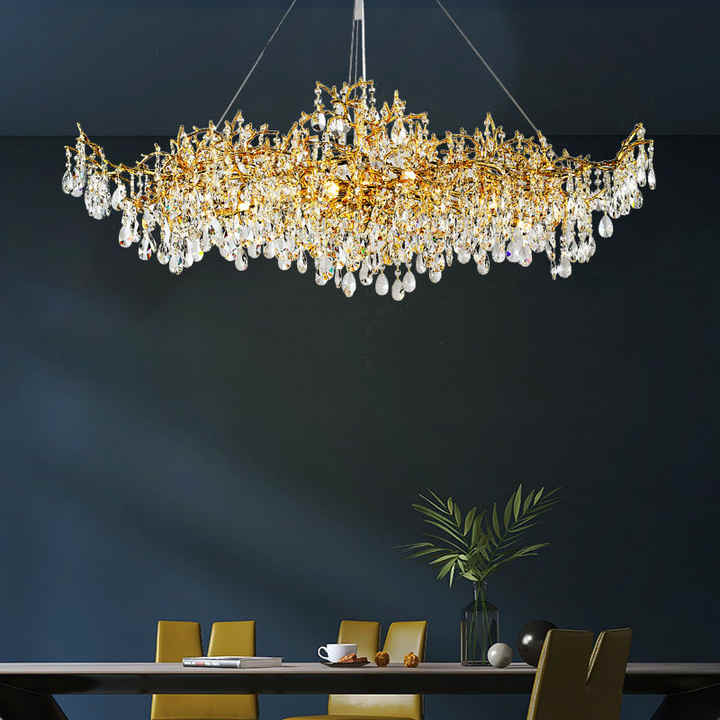Transforming your bedroom into a peaceful retreat is all about the right lighting. Relaxing lighting for the bedroom can set the mood for rest and rejuvenation. From choosing the right fixtures to layering your lights, every detail matters. This guide will walk you through the essentials of creating a cozy, serene space where you can unwind after a long day.
Key Takeaways
- Lighting plays a crucial role in setting a calming atmosphere in your bedroom.
- Using dimmer switches allows you to adjust brightness and create the perfect mood for any time of day.
- Incorporate various light sources, like lamps and chandeliers, to add depth and interest to your space.
- Maximize natural light with thoughtful window treatments and mirrors to enhance brightness and openness.
- Add personal touches like artwork and plants to make your bedroom feel uniquely yours.
Creating A Relaxing Atmosphere With Lighting
Understanding The Importance Of Lighting
Okay, so, lighting is a big deal. I never really thought about it until I started trying to make my bedroom feel less like a dorm room and more like a chill zone. It's not just about seeing stuff; it's about setting the mood. Think about it: bright, harsh lights make you feel awake and alert, which is great for, like, doing taxes, but not so great for winding down before bed. Soft, warm light? That's the ticket to relaxation. It's like giving your brain a signal that it's time to chill out. I read somewhere that our bodies are super sensitive to light because, back in the day, light told us when to sleep and when to hunt woolly mammoths. Now, it tells us when to binge-watch Netflix. Same difference, right?
Choosing The Right Color Temperature
Color temperature? Sounds super technical, but it's actually pretty simple. It's measured in Kelvins (K), and basically, it tells you how warm or cool the light is. Higher numbers (like 5000K and up) are cool, bluish lights – think office buildings or hospitals. Not exactly the vibe we're going for. Lower numbers (2700K-3000K) are warm, yellowish lights – like candlelight or a cozy fireplace. That's what you want for your bedroom. I made the mistake of buying some super bright, cool LED bulbs once, and my bedroom felt like an interrogation room. Switched them out for some soft lighting ones, and it made a world of difference. Trust me, your brain will thank you.
Layering Light Sources For Depth
Layering light is where things get interesting. It's not just about having one overhead light and calling it a day. That's boring and unflattering. Instead, you want to create a mix of different light sources at different heights. Think about it like this:
- Ambient lighting: This is your overall, general light. It could be recessed lights on a dimmer, or even just a soft ceiling fixture. The goal is to provide a base level of light without being too harsh.
- Task lighting: This is light for specific activities, like reading in bed. A good table lamp or a swing-arm lamp is perfect for this.
- Accent lighting: This is decorative light that adds interest and highlights certain features in your room, like artwork or plants. String lights, candles, or small spotlights can work well here.
By layering these different types of light, you create a space that's both functional and visually appealing. It adds depth and dimension to your room, making it feel more inviting and relaxing. Plus, it gives you more control over the overall mood.
I've found that having a few different lamps scattered around the room really helps. I've got a floor lamp in the corner, a table lamp on my nightstand, and some string lights draped over my headboard. It's like my own little light orchestra, and I'm the conductor. Okay, maybe that's a bit much, but you get the idea.
Essential Lighting Fixtures For Bedroom Bliss
Incorporating Dimmer Switches
Okay, so first things first: dimmer switches. Seriously, if you don't have these in your bedroom, you're missing out. Being able to adjust the brightness is a game-changer. Think about it – bright light for getting ready in the morning, soft, ambient light for winding down at night. It's all about control. Plus, it's super easy to install them yourself, or you can get an electrician to do it if you're not the handy type. I put some in last year, and it's made a huge difference. You can even get smart dimmer switches now that you can control with your phone. Crazy, right?
Selecting Table Lamps For Ambiance
Table lamps are a must. Overhead lighting can be harsh, and nobody wants that in their bedroom. You want something soft and inviting. Think about the kind of light the lamp gives off. A warm, soft glow is ideal. The shade matters too! A fabric shade will diffuse the light more than a glass one. I like to have two lamps on nightstands on either side of the bed for symmetry. It just looks nice and balanced. Plus, it's practical for reading in bed. Make sure they're not too tall or too short – you want the light to be at about eye level when you're sitting up in bed.
Using Chandeliers As Focal Points
Okay, a chandelier in the bedroom might sound a little extra, but hear me out. It can add a touch of elegance and drama to the space. It doesn't have to be super fancy or expensive. Even a small, simple chandelier can make a big impact. It can serve as both a focal point and a soft light source. If you have high ceilings, a chandelier can really fill the space and make the room feel more complete. Just make sure it's not too low, or you'll be bumping your head on it every time you get out of bed! I saw this one bedroom once that had a really cool, modern chandelier, and it totally transformed the room. It's all about finding the right style to match your taste.
Chandeliers can be a great way to add a touch of luxury to your bedroom. They can also be a practical source of light, especially if you don't have a lot of natural light in your room. Just be sure to choose a chandelier that is the right size and style for your space.
Natural Light: The Key To Serenity

Understanding The Importance Of Lighting
Natural light is a game-changer. It's not just about seeing better; it's about feeling better. Think about how you feel on a sunny day versus a gloomy one. That's the power of natural light at work. It can boost your mood, increase your energy levels, and even improve your sleep cycle.
Maximizing Daylight With Window Treatments
Window treatments are key. You want to let in as much light as possible, but also maintain some privacy. Here are a few ideas:
- Sheer Curtains: These let light filter through while still offering a bit of privacy. They're great for creating a soft, diffused glow.
- Blinds or Shades: These give you more control over the amount of light entering the room. You can adjust them throughout the day as needed.
- Top-Down Bottom-Up Shades: These are awesome because you can lower the top part to let light in while keeping the bottom part closed for privacy.
Creating A Balance Between Light And Privacy
Finding the right balance between light and privacy can be tricky. Here's the thing: you don't want to feel like you're living in a fishbowl, but you also don't want to block out all the natural light. Consider using a combination of window treatments to achieve this balance. For example, you could use sheer curtains for ambient lighting during the day and heavier drapes for privacy at night.
Using Mirrors To Reflect Natural Light
Mirrors are your best friend when it comes to maximizing natural light. Place them strategically around the room to reflect light and make the space feel brighter and more open. A large mirror opposite a window can work wonders. You can also use smaller mirrors to bounce light around corners and into darker areas. It's a simple trick that can make a big difference.
Natural light is so important for creating atmosphere and promoting a balanced and calm setting. We particularly love dimmer switches to control your lighting at different times of day.
Soft Lighting Techniques For A Cozy Feel
Utilizing Floor Lamps For Warmth
Floor lamps are great because they don't take up table space and can really change the feel of a room. Positioning a floor lamp in a corner can soften the shadows and make the room feel bigger and more inviting. Think about using a warm-toned bulb to really maximize that cozy vibe. I recently got one with a dimmer switch, and it's been a game-changer for movie nights.
Incorporating String Lights For Whimsy
String lights aren't just for the holidays! They can add a touch of magic to your bedroom all year round. I like to drape them along my headboard or around a window frame. It creates a soft, diffused glow that's perfect for winding down before bed. You can find different light sources that fit your style, from tiny fairy lights to larger, more decorative bulbs.
Here are some ideas for using string lights:
- Drape them along the headboard
- Hang them around a window frame
- Place them inside a sheer curtain for a dreamy effect
Adding Candles For A Touch Of Romance
Candles are the ultimate mood setters. There's just something about the flickering flame that instantly makes a room feel more intimate and relaxing. I prefer scented candles with calming scents like lavender or chamomile. Just remember to never leave them unattended! If you're worried about safety, battery-operated candles are a great alternative. They give you the same ambiance without the risk of fire. I love using candles to create a relaxing atmosphere and promote a balanced and calm setting.
Candles are great, but always be careful. Never leave a burning candle unattended, and make sure they are placed on a stable surface away from anything flammable. It's all about creating a relaxing space, but safety always comes first.
Color Schemes That Enhance Relaxation

Choosing Calming Color Palettes
When it comes to creating a relaxing bedroom, color is key. Think soft, muted tones that evoke a sense of peace and tranquility. Avoid bright, jarring colors that can overstimulate the senses.
- Soft blues and greens are reminiscent of nature and can have a calming effect.
- Neutral colors like beige, gray, and cream provide a soothing backdrop.
- Pastel shades, such as lavender or blush pink, can add a touch of warmth and serenity.
I've found that sticking to a limited color palette, usually no more than three or four colors, helps maintain a sense of harmony and prevents the room from feeling too busy.
Using Accent Lighting To Highlight Colors
Accent lighting can play a big role in how your color scheme is perceived. For example, warm-toned essential lighting can make a cool-colored room feel cozier, while cool-toned lighting can enhance the crispness of a neutral palette. Consider using lamps with colored shades to cast a subtle hue on the walls, or install dimmable lights to adjust the intensity and mood.
Creating Contrast With Darker Shades
While light and airy colors are generally recommended for relaxation, incorporating darker shades can add depth and visual interest. A dark accent wall behind the bed can create a focal point and make the room feel more grounded. You could also use darker-colored bedding or furniture to create contrast against lighter walls. Just be sure to use darker shades sparingly to avoid making the room feel too heavy or oppressive. A good balance is key to achieving a relaxing and visually appealing space.
Personal Touches To Elevate Your Space
Incorporating Artwork And Personal Items
Let's be real, a bedroom can feel super generic if it's just furniture and paint. Adding artwork and personal items is what makes it your space. Think about pieces that bring you joy or remind you of good times. It could be anything from framed photos to prints you picked up on vacation. Don't be afraid to mix and match styles, but try to keep a cohesive feel so it doesn't look too chaotic. I like to rotate my art every few months to keep things fresh. It's a small change that makes a big difference.
Using Textiles To Soften The Room
Textiles are your secret weapon for creating a cozy and inviting bedroom. Think beyond just your bedding. Here's a few ideas:
- Rugs: A soft rug underfoot instantly adds warmth. Consider a cozy rug with a plush texture.
- Curtains: Heavy drapes not only block out light but also add a layer of insulation and soundproofing.
- Throw Pillows: Layering throw pillows is an easy way to add color, texture, and comfort. Experiment with different sizes, shapes, and fabrics.
Don't underestimate the power of a good throw blanket. Drape it over your bed or a chair for an extra layer of warmth and style. I'm a big fan of chunky knit blankets – they're so comfy!
Adding Plants For A Natural Element
Bringing plants into your bedroom is a fantastic way to add life and freshness. Not only do they look great, but they also help purify the air. Here are some low-maintenance options that are perfect for the bedroom:
- Snake Plant: Super easy to care for and great at filtering toxins.
- ZZ Plant: Another low-light, low-water option that's practically indestructible.
- Pothos: Trailing vines add a touch of whimsy, and they're easy to propagate.
Make sure to choose plants that fit your lifestyle and the amount of natural light in your room. A little greenery can go a long way in creating a relaxing and inviting space. Consider using sustainable home decor options for your plant pots.
Creating A Multi-Functional Bedroom
Designing Spaces For Relaxation And Work
It's becoming more common to need our bedrooms for more than just sleep. Maybe you're working from home, or just need a quiet space to focus. The key is to divide the room visually and functionally. Consider using a screen or bookshelf to separate your sleeping area from your workspace. A comfortable chair and a small desk can create a productive zone without sacrificing the room's relaxing vibe. Think about storage solutions that keep work materials out of sight when you're off the clock.
Incorporating Technology For Convenience
Technology can definitely make a bedroom more functional, but it's important to do it thoughtfully. Instead of a blaring alarm clock, consider a sunrise alarm that gradually brightens the room. Smart lighting bathroom lighting ideas can be controlled with your voice or phone, allowing you to adjust the ambiance without getting out of bed. A small, discreet speaker can provide soothing sounds for relaxation or focused music for work. Just remember to keep the tech from dominating the space – it should enhance, not overwhelm.
Ensuring Flexibility With Lighting Options
Flexibility is key when your bedroom serves multiple purposes. You'll want bright, focused light for working or reading, and soft, ambient light for relaxing.
- Task Lighting: A desk lamp or adjustable floor lamp is essential for work.
- Ambient Lighting: Dimmable overhead lights or string lights can create a relaxing atmosphere.
- Accent Lighting: Wall sconces or small spotlights can highlight artwork or architectural features.
Think about installing multiple light sources that can be adjusted independently. This allows you to customize the lighting to suit whatever activity you're doing, whether it's working on a project or winding down for the night. A well-lit room is a versatile room.
Wrap-Up: Your Bedroom Oasis Awaits
So there you have it! Creating a cozy and relaxing bedroom is all about mixing comfort with your personal style. From picking the right lighting to choosing soft bedding and adding those little touches that make it yours, every detail counts. Remember, it’s not just about how it looks, but how it feels. A well-lit space can really change the vibe, making it a perfect spot to unwind after a long day. Take your time to experiment with different elements, and soon enough, you’ll have a bedroom that feels like a true retreat. Happy decorating!
Frequently Asked Questions
What type of lighting is best for relaxation in a bedroom?
Soft, warm lighting is best for relaxation. Using dimmers, table lamps, and candles can help create a cozy atmosphere.
How can I use color temperature to enhance my bedroom's mood?
Choose warm color temperatures (around 2700K to 3000K) for a calming effect. This creates a cozy and inviting space.
What are some good lighting fixtures for a peaceful bedroom?
Consider using table lamps, floor lamps, and chandeliers. Dimmers can help adjust the brightness to suit your needs.
How can I maximize natural light in my bedroom?
Use light curtains or blinds that can be fully opened during the day. Mirrors can also help reflect and spread natural light.
What are some creative ways to add soft lighting?
String lights and candles can add a whimsical touch. Floor lamps can also provide warm light and a cozy feel.
How can I personalize my bedroom lighting?
Incorporate personal items like artwork, choose textiles that match your style, and add plants for a natural touch.



